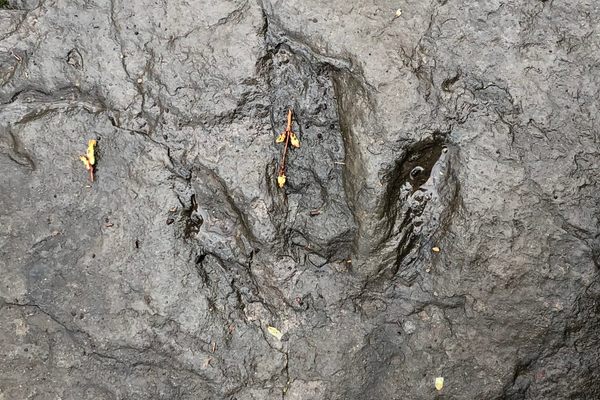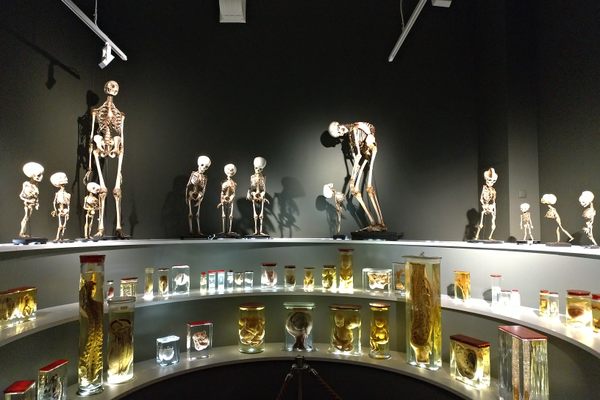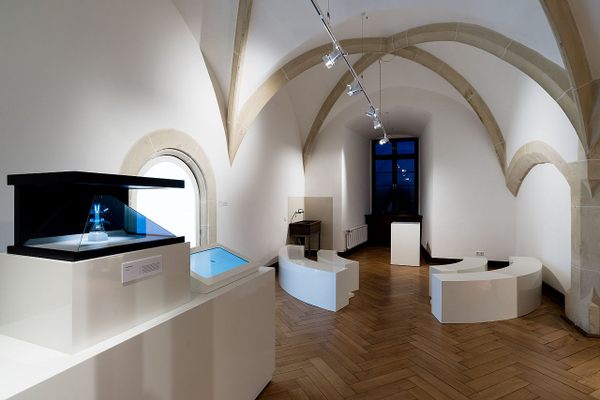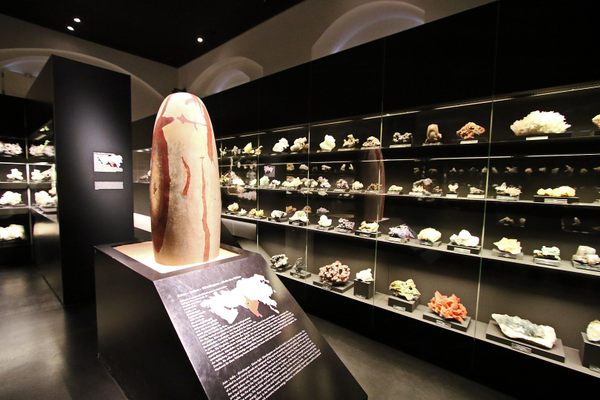Joe Webb Peoples Museum
A small museum packed with specimens from important fossil sites and minerals from historical pegmatite quarries.
Tucked away on the fourth floor of the Exley Science Center at Wesleyan University, the Joe Webb Peoples Museum is a showcase of geological and natural wonders. Though not much bigger than a large living room, the museum houses enough material for a space 10 times its size.
The museum was named after a well-regarded chairman of the Wesleyan Geology Department who was instrumental in many natural history endeavors in Connecticut, including the founding and preservation of nearby Dinosaur State Park. The museum’s main attractions are several displays of finely detailed specimens from famous fossil sites around the world such as the Burgess Shale of British Columbia; the Mazon Creek ironstone concretions of Illinois; the lithographic limestones of Solnhofen, Germany; numerous ancient fish fossils from the Connecticut Valley; and more
The museum also boasts a large mineral collection, including several specimens gathered from Connecticut pegmatite quarries. Pegmatites have historically been a source of many useful minerals, including gem-quality tourmalines and sheets of mica that were used in place of glass in colonial American windows.
The Joe Webb Peoples Museum is a descendant of the original Wesleyan Museum of Natural History, which opened in 1871 and amassed a massive collection of minerals, fossils, and archeological artifacts. When the original museum closed in 1957, its specimens were either donated to other museums or unceremoniously shoved into dormitory basements, maintenance tunnels, and the “Penthouse” storage room on top of the Exley Science Center.
In 2017, Wesleyan faculty, researchers, and students undertook several expeditions throughout campus to track down these lost treasures and display them at the Joe Webb Peoples Museum. Among their more spectacular finds were a replica shell from an armadillo-like Glyptodon and the skull of a Deinotherium, an unusual elephant relative that had downward-curving tusks on its lower jaw. They also discovered many high-quality fossil casts of ichthyosaurs, plesiosaurs, and even a large salamander from Miocene era Andrias scheuchzeri—an extinct giant salamander that it’s 18th-century discoverer originally mistook for the remains of a person who drowned in Noah’s flood.
Most of these larger casts would not fit into the limited space in the museum proper and are displayed on the third, fourth, and ground floors of the Exley Science Center. In addition, the walls of Exley’s ground floor are covered with sandstone slabs bearing high-quality dinosaur tracks gathered from nearby quarries. These additional exhibits effectively extend the museum’s borders beyond its single room.
Know Before You Go
The Joe Webb Peoples Museum is located on the fourth floor of the Exley Science Center in the Geology Department at Wesleyan University. The museum is usually locked but can be easily accessed by asking at the main geology office. The fossil dinosaur tracks, Deinotherium skull, and Glyptodon skeleton are on the ground floor. Other fossil casts can be seen on the fourth and third floors. The museum is surrounded by educators' offices, so please be respectful when visiting. Curb-side parking can usually be found along nearby Pine and Lawn Streets.

























Follow us on Twitter to get the latest on the world's hidden wonders.
Like us on Facebook to get the latest on the world's hidden wonders.
Follow us on Twitter Like us on Facebook